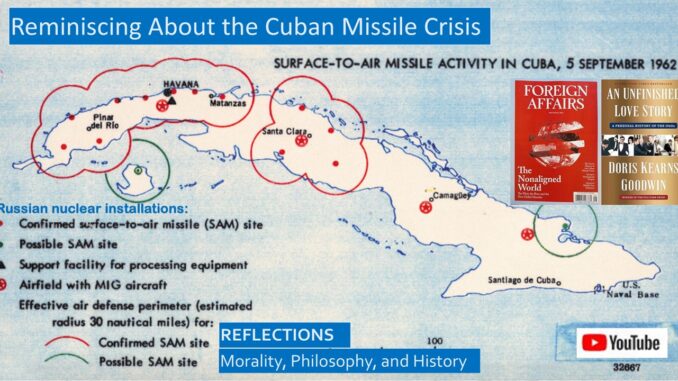
Why did the Russians think the United States would accept the placement of nuclear ballistic missiles in Cuba, close to Florida, and within the range of Washington?
How close did the world come to nuclear war?
How successful was Russia in constructing missile sites in Cuba during the hurricane season?
Why did Fidel Castro host a Cuban Missile Crisis forty-year reunion for the Cuban, American, and Russian historians and key players in Havana, Cuba?
YouTube video for this blog: https://wp.me/pachSU-1er
RICHARD GOODWIN MISSPOKE ABOUT CUBAN FREEDOM FIGHTERS
Richard Goodwin was a speech writer for John F Kennedy, then for Lyndon Johnson. Just previous to the fourth televised debate between Kennedy and Nixon, he was tasked with coining a statement on how JFK opposed Fidel Castro. Dick is being paid for rhetorical flourishes: to emphasize how JFK is tougher on communism than their arch-conservative rival Nixon, he pens this: “We must attempt to strengthen the anti-Castro forces in exile, and in Cuba itself, who offer eventual hope of overthrowing Castro. Thus far these fighters for freedom have had virtually no support from our Government.”
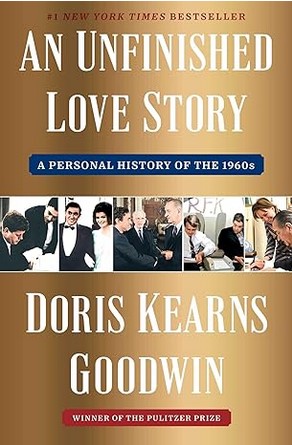
Ordinarily, the candidate would approve any policy statement that supposedly is his idea, but Kennedy had gone to sleep already, so he could be well rested for the next day’s debate. His calendar was so jammed the next day that the statement was released without his review, the only policy statement of the campaign that he did not review. Which meant that Kennedy was caught off-guard when the phrase, “fighters for freedom,” stirred up controversy.
Little did they know, but would soon discover, that the Eisenhower administration initiated a top-secret program where the CIA was training a covert force of Cuban exiles as freedom fighters to overthrow the Castro government!
Oddly enough, even though Nixon was probably aware of this top-secret program, during the debate he called Kennedy out for this shocking statement, accusing him of shooting from the hip, saying such a policy would risk World War III! Kennedy was forced to issue a clarification the next day after newspapers blared in their headlines Nixon’s accusation, saying he was offering only “moral and psychological support, not military or political support.” This episode got under Kennedy’s skin.[1]
FAILED BAY OF PIGS INVASION
These freedom fighters would storm onto the Cuban beaches in the Bay of Pigs fiasco in April 1961, some months after Kennedy won the Presidency by a narrow margin. Kennedy, much to his chagrin, listened to his military advisors when they assured him of the probable success of the mission. But Kennedy was not willing to risk World War III, and he was not willing to bolster the freedom fighters with additional military support, and he definitely would not bolster their forces with American soldiers.
John F Kennedy, Cuba, Russia, and Civil Rights, Book Review of An Unfinished Love Story
https://seekingvirtueandwisdom.com/john-f-kennedy-cuba-russia-and-civil-rights-review-of-an-unfinished-love-story/
https://youtu.be/krkJki2vQ2o
Dick Goodwin, speech writer, and Arthur Schlessinger, fellow White House staffer, thought it was unlikely that the Cuban people would rise in revolt after these crazy Miami Cubans stormed the beaches. How would they know to revolt? How could the news be broadcast? They shared their concerns with Secretary of State Dean Rusk, who sympathized with them, but said he could not advise the President to call off the invasion.
The Bay of Pigs invasion was an embarrassing fiasco, Cuban infantry and artillery easily overwhelmed the freedom fighters, and Kennedy had to negotiate with Castro for the release of the survivors. Unfortunately, this led to Castro wondering whether another more substantial invasion was forthcoming.
Because he wrote several speeches on Latin American affairs, Dick was asked to represent the President in several Latin American conferences, even though he could not speak Spanish. You can read more about these travels in an Unfinished Love Story.
RICHARD GOODWIN AND ALLIANCE FOR PROGRESS
In August 1961, three months after the Bay of Pigs Invasion, a thirty-three-member US delegation flew to a resort city in Uruguay for a Latin American conference. The Cuban delegation, led by Che Guevara, Castro’s charismatic right-hand man, were non-voting observers. Previously, Kennedy had pledged foreign aid to encourage democracy in Latin America. Overriding the objections of the State Department, Douglas Dillon, Secretary of Treasury and head of the delegation, pledged a billion dollars for land distribution and tax reform, to be followed by twenty billion over ten years. Dick circulated among the delegations to persuade them to sign on. All twenty countries attending, except for the observer Cuba, signed the charter that founded the Alliance for Progress, which was a ten-year program establishing economic cooperation between the United States and Latin America.[2]
Some of the goals sought by the Alliance for Progress were achieved, though how much effect the Alliance had on this is debatable. Per capita income did increase, adult literacy improved, but illiteracy was not wiped out, and although health clinics were opened, they did not keep up with population growth. But there were serious shortcomings: Latin American elites opposed land reform, minimum wages were often set too low, and even though the US provided twenty billion dollars of foreign aid, it was not enough to make an impact. Furthermore, Johnson and Nixon were not dedicated to this endeavor, and these efforts were eventually abandoned.[3]
CHE GUEVARA AND RICHARD GOODWIN CHAT INFORMALLY
On the night the charter was signed, Che Guevara sent a box of cigars to Dick and asked for an informal meeting. Dick Goodwin checked in with Dillon, who thought that this would not hurt, but they both changed their minds when Che Guevara blasted the conference, saying that “one could not expect the privileged to make a revolution against themselves.”
But on the last night of the conference, Che Guevara crashed the dinner party that Dick Goodwin was attending. Later he thought he should have left, but simply told Che that he had no authority to negotiate anything, but would relay whatever discussion they had to President Kennedy.
In An Unfinished Love Story, Goodwin recalls, “Guevara began by stating that the US must understand that the Cuban revolution was irreversible and that it was a mistake to assume that a regime which maintained the strong support of the masses could be overthrown from within. But he frankly acknowledged that Cuba faced serious economic difficulties.”
Although Che Guevara realized that although negotiations were not currently possible, that perhaps an understanding could be reached. Goodwin recalls Guevara’s suggestion: “Though properties expropriated” from wealthy landowners “could not be returned, they could be paid for in trade. Cuba would agree not to make any political alliance with Russia, though they would retain ties based on natural sympathies. They would welcome technicians and visitors from every country to come and work. They might also discuss limiting the activities of the Cuban Revolution in other countries. With these understandings, Guevara hoped, the two countries might be able to live in peace.”
Dick did not realize there were eavesdroppers on their long dialogue, which lasted until dawn. The Brazilians and Argentinians were listening, as were newsmen, waiters, and whoever else was in that room. This fed the rumor mill which soon conflated their informal discussion into formal negotiations.
Dick debriefed Kennedy on their informal discussion, and Kennedy let Dick keep the box of cigars after grabbing a handful. There was a brief controversy and Congressional hearings, which concluded that this was indeed an informal discussion that did not affect policy.
But the State Department was concerned that Dick was a loose cannon, and they successfully sought to have him banished from the White House. Three months later, Dick was assigned an obscure office in the State Department. But later when Kennedy traveled to Caracas and Bogota, Dick accompanied him, penning his speeches for the trip. Although he was the President’s man for Latin American affairs, the State Department bureaucrats excluded him from meetings and sabotaged his efforts.
CUBAN MISSILE CRISIS-YEAR REUNION
Although his banishment from the White House meant that Dick did not personally witness the behind-the-scenes happenings of the Cuban Missile Crisis, his famous conversation with Che Guevara earned the Goodwins an invitation to a unique 2002 diplomatic reunion in Havana of American, Cuban, and Russian historians and key participants, who were now in their seventies and eighties. Fidel Castro was hosting the reunion. In addition to Richard Goodwin, the American delegation included former Secretary of Defense Robert McNamara, Ted Sorenson, and Arthur Schlessinger. The Americans and Cubans greeted each other like old friends, but the Russians were frostier.
Goodwin recalls: “That President Kennedy had handled the Cuban Missile Crisis with assurance, wisdom, and skill remained the prevailing opinion of the conferees four decades later. By choosing a quarantine of Soviet ships instead of air strikes to be followed by an invasion, Kennedy had bought time to cut a deal with Premier Nikita Khrushchev, averting a potential nuclear war.”
Goodwin continues: “The Soviets would remove the missiles which had been installed in the Cuban countryside within striking distance of Florida; the United States would pledge that there would be no invasion of Cuba. If all these conditions were met, Kennedy gave his word that the US would remove nuclear missiles from Turkey, which stood within striking distance of Russia.”
The danger of a nuclear war was very real. In 2022, we learned that a Soviet submarine was compelled to surface during the crisis. She had been unable to communicate with Moscow while underwater, and two out of the three officers on board agreed to fire their nuclear weapons in response to practice depth charges being detonated, which they thought were real. But the third refused to unlock the button, and the submarine surfaced, and peacefully withdrew from Cuba.
For Castro and the Cubans, one highlight of the event was Dick’s memories of his discussion with Che Guevara, which was remembered more vividly by the Cuban diplomats than by the Americans. For Dick, “the years seemed to drop away as he described Che’s entry to the party, swarmed by adoring women.” The Argentinian and Brazilian delegates brought Che to Dick and found a small room with seats for three of four men.
“Che immediately sat on the floor,” Dick told the conferees. “I immediately followed suit. I refused to let him out-proletarianize me,” and the interpreters followed suit, until both Che and Dick chose to sit in the small couch and chair.
Dick said, “Che opened the conversation by thanking Dick for the Bay of Pigs” Invasion.
“Our control was incomplete,” Che acknowledged. “But it rallied the people behind us and allowed us to overcome the middle-class opposition.”
Dick said that he and Kennedy had thought that Che’s proposal was reasonable, but that the American public mood would not welcome any rapprochement at that time. But after the Cuban Missile Crisis had been resolved, Kennedy had dispatched an emissary to explore possible talks with Cuba. This diplomatic effort was derailed by his assassination.
Afterward, Dick and Doris Goodwin were invited to a private lunch with Castro, where the Cuban leader reminisced about his time with Che Guevara, who had been assassinated while trying to spark a revolution in Bolivia four years later. The focus of the conference was what could be done to prevent future nuclear confrontations.[4] What was the Castro’s purpose for suggesting this unusual reunion? Perhaps the Cubans were seeking some type of reconciliation that was briefly explored in the closing days of the Obama administration.
CUBAN MISSILE CRISIS FROM THE RUSSIAN PERSPECTIVE
Some Russian documents on the Cuban Missile Crisis were declassified from Russian archives before the Ukrainian invasion, others were quietly declassified in May 2022 for the sixtieth anniversary of this event. Just as the Americans permitted low-level officials to dictate an unwise policy when the CIA trained the Cuban freedom fighters to stage the Bay of Pigs invasion, so low-level Russian officials foolishly thought that palm trees could hide ballistic missiles in Cuba. A recent Foreign Affairs article describes how the rigid Soviet bureaucracy almost led the superpowers into a nuclear war.
Nikita Khrushchev was resentful of America’s assertiveness in Europe and was especially wary of the nuclear missiles stationed in Turkey. Also, Castro and Khrushchev worried whether Washington would try again with another invasion of Cuba backed by American military might, which would embarrass Russia if the Cubans were defeated. So, he sent Sergei Biryuzov, commander of the Soviet Strategic Missile Forces, to Cuba to survey the Cuban countryside for possible places where missiles could be hidden. However, Biryuzov was, by training, an artilleryman who had little experience with missiles. Biryuzov reassured Khrushchev that the missiles could be easily hidden under the swaying branches of the swaying Cuban palm trees.
But when Igor Statsenko, commander of the Soviet missile division, flew a helicopter over Cuba, he realized what any Floridian could have told him, that palm trees cannot effectively hide anything, especially the Cuban palm trees that were spaced fifty feet apart, covering about one-sixteenth of the ground. But his contrary observations were never relayed to Khrushchev.
MASSIVE SOVIET COMMITMENT IN CUBA
The Soviets were not planning to station a few missiles in Cuba, they were planning a major military base, they planned to permanently station over fifty thousand soldiers and specialists in the Cuban countryside to build the launch pads and maintain and protect the sixty ballistic missiles. This was a major construction project, they would need cranes, bulldozers, excavators, and cement mixers to build the launching pads. And they needed MIG fighters, bombers, helicopters, cruise missiles, tanks, and infantrymen to protect the missile installations.
The Russians soon learned that palm trees were ineffective at hiding these massive missile installations. The Russians also had to somehow transport all these men and munitions and equipment across the vast oceans, something which the Russians had never done before, and which would also be impossible to hide. Statsenko inspected the initial Russian efforts and discovered that nobody in the Russian delegation could speak Spanish, and this was evidently before the days when Cubans studied Russian in Russian universities. The Russians were ignorant of the conditions in Cuba, they found they could not dig underground bunkers in the rocky Cuban soil with the low water table. They did not realize that they deployed their forces in the middle of the wet hurricane season. Their electrical equipment was not compatible with the Cuban power grid. The Soviet electronics corroded in the sweltering humidity.
By the time the CIA flyovers definitively concluded these were indeed Russian ballistic missiles in October 1962, the Russians only had a few missile sites that were theoretically operational, but with major workarounds. If Moscow had given orders to fire missiles at Washington, the Russians would need up to a full day to truck the warheads to the launch sites. Cuba had no say in whether the missiles would be launched, this order could only come from Moscow. But Kennedy did not know this.
The Russians may have realized, though they dared not admit it, that this whole project was unworkable and overly ambitious. Although this likely contributed to his eventual retirement, Khrushchev may have reluctantly welcomed Kennedy’s proposal to remove American ballistic missiles from Turkey in exchange for removing the Russian missiles from Cuba, along with Kennedy’s promise not to invade Cuba.
Our Foreign Affairs authors comment that “Soviet military leaders had minimal expertise on Cuba, deceived themselves about their ability to hide their operation, overlooked the dangers of US aerial reconnaissance, and ignored the warnings of experts.” Also, “the military’s hyper-centralization prevented the feedback mechanisms from working properly.”
We have more details on the Cuban Missile Crisis, and the preceding failed Bay of Pigs Invasion which many have encouraged this Soviet endeavor, in our reflection on the JFK presidency, as told from the personal experiences of his speechwriter and assistant, Dick Goodwin.
John F Kennedy, Cuba, Russia, and Civil Rights, Book Review of An Unfinished Love Story
https://seekingvirtueandwisdom.com/john-f-kennedy-cuba-russia-and-civil-rights-review-of-an-unfinished-love-story/
https://youtu.be/krkJki2vQ2o
CUBAN MISSILE CRISIS COMPARED TO WAR IN UKRAINE
Our Foreign Affairs experts draw a parallel between Cuba and Ukraine. “Although Russia in theory remains committed to avoiding a nuclear war, Putin seems to be stoking fears of just such a conflict. Like Khrushchev in his time, Putin is rattling the nuclear saber to prove to everyone, and perhaps above all to himself, that Moscow will not be defeated.”
Our authors continue: “Also, like Khrushchev, Putin is a gambler, and his misadventure in Ukraine suffers from the same feedback failures, excessive secrecy, and hyper-centralization that plagued Khrushchev in Cuba. Just as Khrushchev’s lieutenants failed to question his rationale for aiding Cuba, so Putin’s top ministers and advisers did not resist his claim that Ukrainians and Russians were one people and therefore Ukraine had to be ‘returned’ to Russia, by force if need be.”
Our authors chillingly observe, “At a time of escalating tensions with another brash leader in the Kremlin, the story of the crisis offers a chilling message about the risks of brinkmanship. It also illustrates the degree to which the difference between catastrophe and peace often comes down not to considered strategies but to pure chance.”[5]
Doris Kearns Goodwin also recounted Dick’s firsthand accounts of his experiences as speechwriter, and her experiences as an assistant, for the next President, Lyndon Johnson.
Lyndon Johnson, Enacting the Great Society and Vietnam, Review of an Unfinished Love Story
https://seekingvirtueandwisdom.com/lyndon-johnson-enacting-the-great-society-and-vietnam-review-of-an-unfinished-love-story/
https://youtu.be/MgVEipHdvfM
DISCUSSING THE SOURCES
Doris Kearns Goodwin’s An Unfinished Love Story included this fascinating behind-the-scenes look at the Cuban Missile Crisis. We discuss this source in more detail in the two main videos reviewing this book.
The Foreign Affairs Article was titled, Blundering on the Brink, the Secret History of the Cuban Missile Crisis, and explained in detail the bureaucratic missteps the Russians made in trying to implement this policy from the Russian point of view.
[1] Doris Kearns Goodwin, An Unfinished Love Story (New York: Simon and Schuster, 2024), Chapter 3, Aboard the Caroline, pp. 75-76.
[2] Doris Kearns Goodwin, An Unfinished Love Story, Chapter 4, A Pandora’s Box of Cigars, p. 98.
[3] https://en.wikipedia.org/wiki/Alliance_for_Progress
[4] Doris Kearns Goodwin, An Unfinished Love Story, Chapter 4, A Pandora’s Box of Cigars, pp. 99-110.
[5] Sergey Radchenko and Vladislav Zubok, Blundering on the Brink, The Secret History of the Cuban Missile Crisis, Foreign Affairs, May/June 2023, Volume 102, Number 3, pp. 45-63.

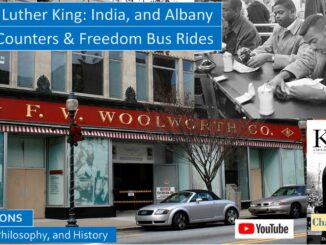
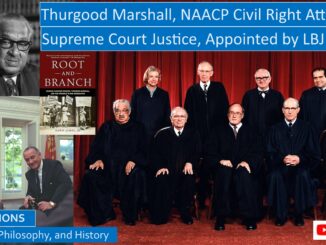
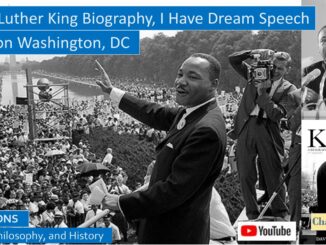
Be the first to comment